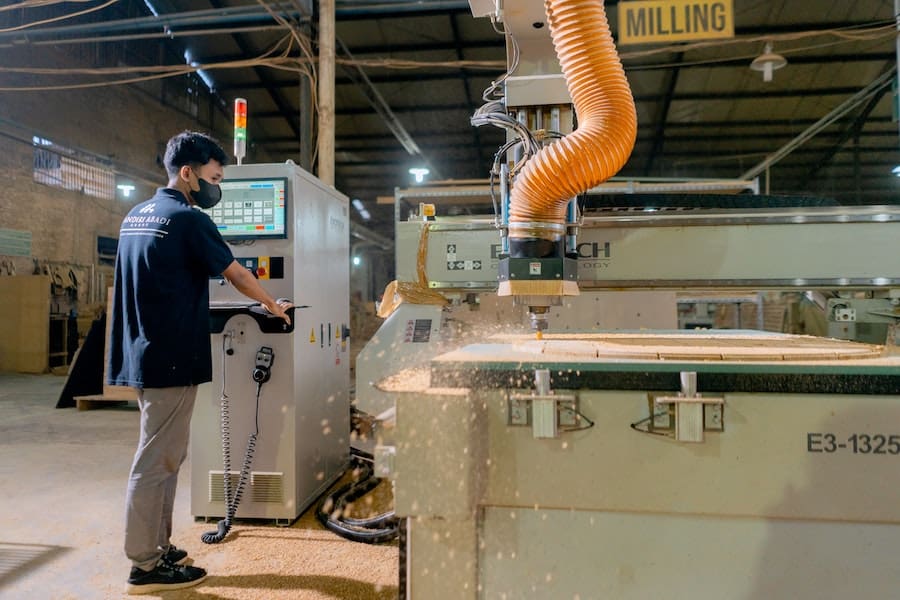In the world of manufacturing, material conversion processes are essential steps that transform raw materials into finished products, components, or packaging materials.
These processes are critical across various industries, and they enable the efficient production of a wide range of everyday items.
Let’s explore the concept of material conversion and how it is applied in different manufacturing sectors, such as paper converting, tag and label, towel and tissue, packaging, battery, non-woven, metals, tire & rubber, and food and beverage
What Is Material Conversion?
Material conversion is the process of transforming raw materials into useful and finished products through various techniques.
In manufacturing industries, this involves converting continuous rolls of materials into different shapes, sizes, or formats that meet specific requirements.
Material conversion enables the creation of diverse products we use in our daily lives.
Furthermore, the material conversion processes for all manufacturing industries have become a key component in maintaining efficiency and sustainability, ensuring that resources are utilized optimally.
The continuous evolution and improvement of these processes are essential for meeting the dynamic demands of consumers and keeping pace with the rapidly changing technological landscape.
Paper Converting Industry
In the paper converting industry, material conversion processes are used to transform large rolls of paper into various products like stationery, packaging materials, labels, and sanitary items.
For example, slitting systems precisely cut paper rolls into narrower widths, while winding organizes the cut pieces into usable rolls.
Web guiding ensures that the paper moves smoothly during printing and cutting, and rotary die cutting shapes the paper into custom designs.
Tag And Label Industry
In the tag and label industry, material conversion processes produce rolls of labels for products.
Slitting systems and winding cut and organize label rolls, while web guiding ensures accurate positioning during printing and cutting.
Rotary die cutting shapes the labels into desired shapes, creating eye-catching designs and informative tags for various products.
Towel And Tissue Industry
In the towel and tissue industry, material conversion processes are used to transform large tissue rolls into products like paper towels and tissues.
Slitting systems cut the wide rolls into smaller widths, and winding organizes them into manageable rolls.
Web guiding ensures proper alignment during embossing and perforation processes, while rotary die cutting shapes the rolls into uniform and neatly cut products.
Packaging Industry
In the packaging industry, material conversion processes create various packaging materials.
Slitting systems cut large rolls of packaging material into narrower widths, while winding organizes them into rolls for further use.
Web guiding ensures precise alignment during laminating, folding, and cutting, and rotary die cutting shapes packaging components like boxes and pouches.
Battery Industry
In the battery manufacturing sector, material conversion processes are used to shape battery components accurately.
Winding organizes the components into coils, while slitting systems cut them into specific sizes.
Rotary die cutting ensures precise cutting of materials used in batteries, contributing to proper fit and functionality of battery cells
Non-Woven Industry
In the non-woven industry, material conversion processes are used to create non-woven materials used in hygiene products, medical dressings, and automotive components.
Slitting systems cut wide rolls of non-woven material into narrower widths, while winding organizes them into manageable rolls.
Web guiding ensures proper alignment during the manufacturing of non-woven rolls, and rotary die cutting shapes the material into accurate and customized shapes.
Metals Industry
In the metals industry, material conversion processes involve cutting and shaping metal sheets and foils for various applications, including electronics and automotive parts.
Slitting systems cut metal sheets into narrower strips while winding organizes them for further use.
Rotary die cutting provides fast and precise cutting capabilities, enhancing the efficiency of metal fabrication.
Tire & Rubber Industry
In the tire manufacturing sector, material conversion processes involve cutting rubber materials into specific shapes and sizes.
Slitting systems cut wide rolls of rubber into narrower strips, and winding organizes them into usable rolls.
Web guiding ensures accurate alignment of rubber rolls during cutting and shaping, while rotary die cutting enables consistent and uniform tire components.
Food And Beverage Industry
In the food and beverage industry, material conversion processes are used to create custom packaging solutions for food products.
Slitting systems cut wide rolls of packaging material into narrower widths while winding organizes them into usable rolls.
Web guiding ensures precise alignment during the packaging process, and rotary die cutting allows for the efficient production of food packaging materials, ensuring product safety and freshness.
Conclusion
Material conversion is a fundamental concept in the manufacturing industry, enabling the transformation of raw materials into finished products through various techniques.
From paper converting to food packaging, material conversion processes, including slitting systems, winding, web guiding, and rotary die cutting, play a crucial role in shaping diverse products used in our everyday lives.
Embracing these processes allows industries to achieve innovation, sustainability, and competitiveness in the global market.
By optimizing material conversion techniques, manufacturers can efficiently meet consumer demands and contribute to a thriving manufacturing landscape.


